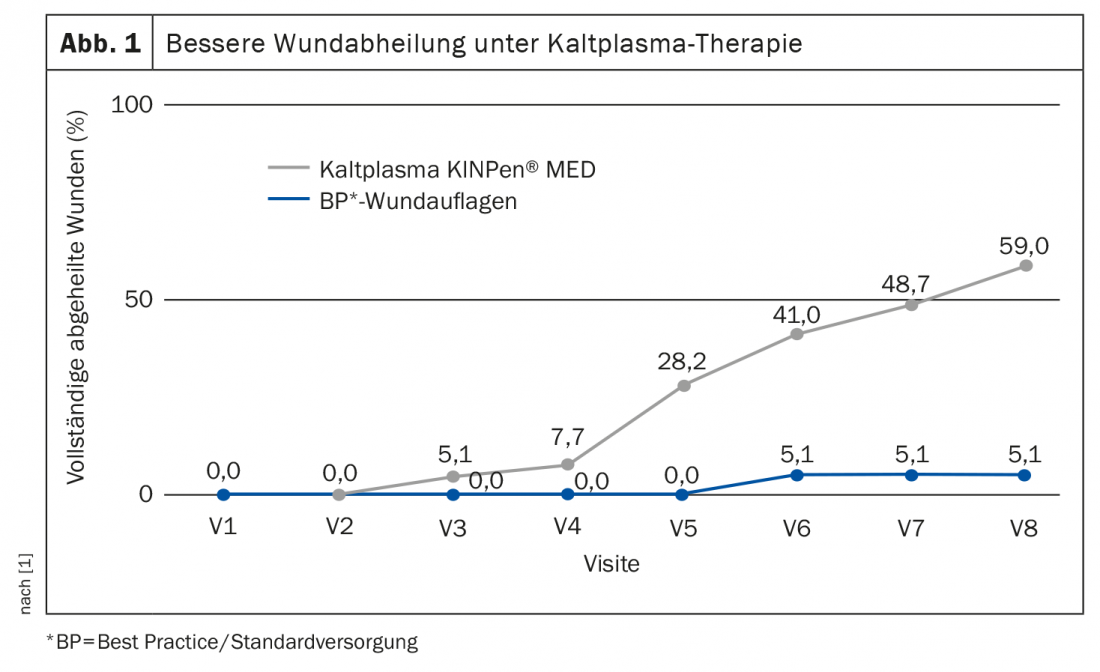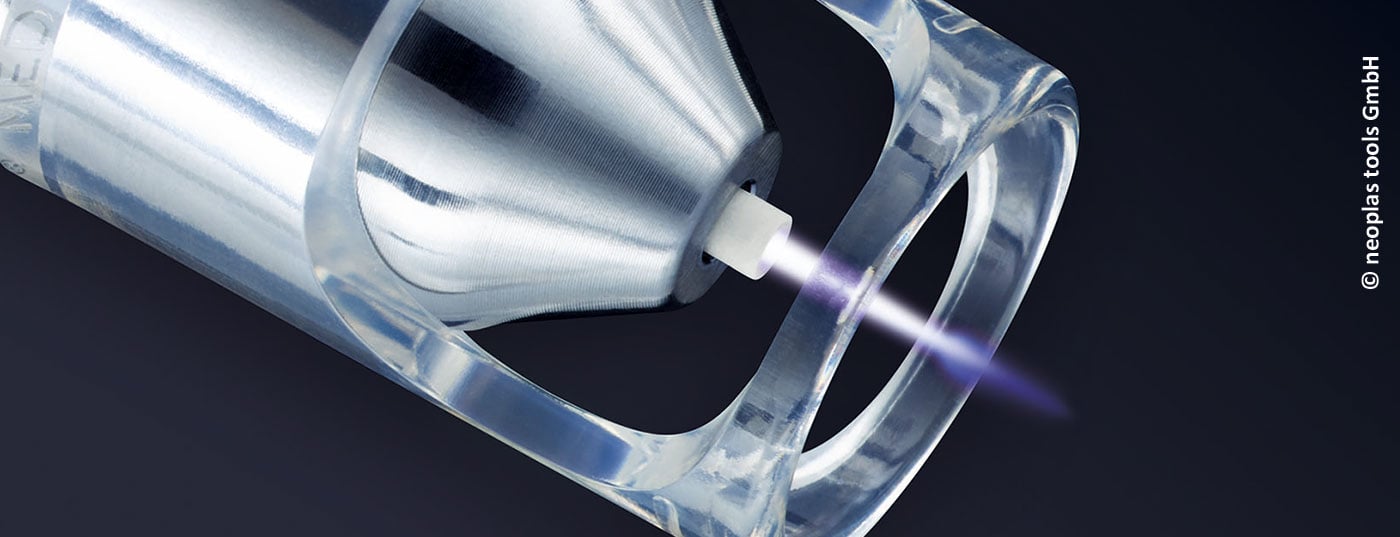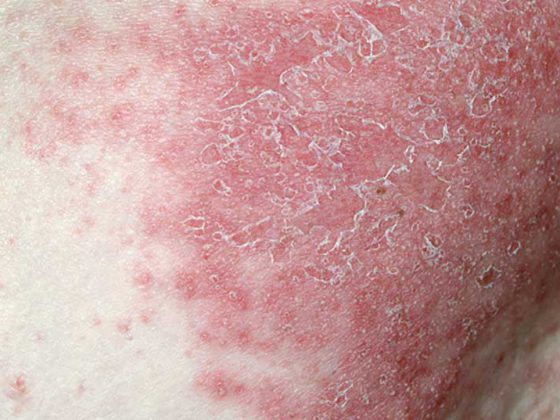Chronic wounds are often associated with high morbidity and significant impairment in patients’ daily lives. In a comparative clinical study, treatment with an innovative cold plasma jet procedure resulted in significant improvement in wound closure and infection control. Cold plasma treatment also proved to be cost-effective and well tolerated.
(red) In the journal Nature Scientific Reports, the great potential of the cold plasma jet for the management of chronic wounds was once again demonstrated. [1,2]. This confirms earlier promising findings of this innovative treatment method [3]. In the study conducted by Prim. Prof. Robert Strohal, Head of the Department of Dermatology and Venereology at the Landeskrankenhaus Feldkirch (A), wound therapy with the cold plasma jet kINPen was tested.® MED compared with current best practice treatment in patients with infected and non-infected wounds. [1,2]. “This study was the first to investigate the exclusive effect of tissue accessible cold plasma on wound healing and infection control without the use of additional standard therapy,” said Prof. Strohal [1,2]. Cold plasma is a gas with ionized atoms, ions and electrons that has been shown to disinfect wounds and activate the wound healing process. With its fine jet, the Plasmajet kINPen® MED enables highly precise treatment under visual control and without touching.
Randomized controlled trial
The clinical trial included 78 patients with wounds up to 10×20 cm in size and existing for at least 6 weeks [1,2]. Participants were randomized 1:1 into two groups and treated for the 6-week study period with either the cold plasma jet kINPen® MED (30 seconds per cm2 wound area) or an appropriate wound dressing according to standard care best practice (BP). For patients with multiple wounds, only one wound was evaluated at a time.
Cold plasma jet therapy was performed in the cold plasma (CAP) group three times in the 1st week, twice in the 2nd week and once weekly in the following observation period, furthermore the wounds were covered with gauze as well as a secondary dressing. In contrast, in the best practice group, treatment was with a wound phase-adapted overlay. The infected wounds were also cleaned with an antiseptic. In both groups, those patients with venous ulcers received compression therapy.
High rate of complete healing
Under cold plasma, 59% of all wounds were completely healed within six weeks, compared with 5.1% in the best practice group (Fig. 1) [1,2]. In addition, wound infections resolved statistically significantly faster under cold plasma. The proportion of healthy tissue increased significantly faster after treatment with the cold plasma jet than in the comparison group. By the end of the study, the wound area in the cold plasma group had reduced by 94.7% from baseline, compared with only 56.3% in the comparison group.

Cold plasma jet also superior in terms of infection control
In all 13 wounds infected at baseline in the CAP group, complete resolution of signs of infection was achieved without the need for additional antiseptics [1,2]. In contrast, 4 of the 18 wounds infected at baseline in the BP group showed no improvement despite the use of antiseptics. In addition, signs of infection decreased statistically significantly faster under cold plasma jet therapy than under BP therapy. These data confirm previously published evidence on the good antimicrobial efficacy of CAP.
High patient satisfaction scores and cost efficiency
The faster wound healing and thus shorter therapy duration when using the Plasmajet kINPen® MED can significantly improve the quality of life [1,2]. Patients confirm the very good tolerability and even described the treatment as pleasant in the majority of cases when questioned. A cost-effectiveness analysis of the study data additionally showed a cost saving in dressing material of 6% compared to the comparison group. In addition, 21.4% fewer physician visits and 34.3% fewer dressing changes were necessary in the cold plasma group. Savings in dressing materials alone resulted in a cost advantage for cold plasma jet therapy of 64.7% over best practice.
Source: neoplas med GmbH
Literature:
- “Superiority of cold plasma jet therapy in treatment of chronic wounds proven by gold standard study”, neoplas med GmbH, 07.03.2022.
- Strohal R, et al: Chronic wounds treated with cold atmospheric plasmajet versus best practice wound dressings: a multicenter, randomized, non-inferiority trial. Scientific Reports; 2022; DOI: 10.1038/s41598-022-07333-x.
- Stratmann B, et al: Effect of Cold Atmospheric Plasma Therapy vs Standard Therapy Placebo on Wound Healing in Patients With Diabetic Foot Ulcers: A Randomized Clinical Trial. JAMA Network Open 2020; 3(7): e2010411.
HAUSARZT PRAXIS 2022; 17(3): 51
DERMATOLOGY PRACTICE 2022; 32(2): 19












